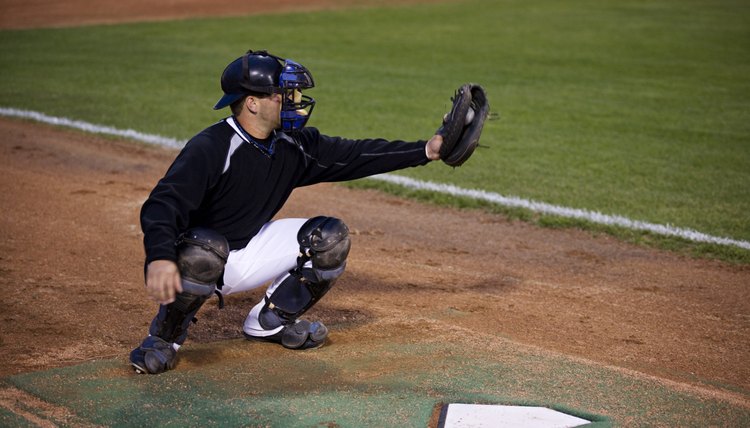Why Does the Catcher Throw the Ball After a Strikeout?

One of a pitcher's best weapons is the strikeout. In theory, when you strike someone out, you keep all of the runners on the base where they are. In some situations, however, a catcher needs to throw the ball after a strikeout. Some of these throws are routine, but others are crucial to the game.
Passed Ball Third Strike
If you're the catcher and you either do not catch the third strike or you drop it, the batter becomes a base runner and can take off to first base. You then need to throw the ball to first in order to complete the out. Otherwise, the batter is safe at first. If first base is already occupied and there are fewer than two outs, however, there is no need to throw to first base, as the base runner is out.
Stolen Base Attempt
Another crucial situation in which you may have to throw the ball after a strikeout occurs if a base runner attempts to steal a base. As a catcher, you must try to throw out the base runner to prevent him from taking the base. When a catcher throws out a base runner trying to steal after a strikeout of the batter, it's commonly referred to as the "strike 'em out, throw 'em out" double play.
Around the Horn
If a strikeout occurs and no one is on base, it's common to see the catcher throw the ball to either first base or third base. This starts the team throwing the ball around the infield, which is known as "around the horn." The ball will often go to the third baseman, second baseman, shortstop, then back to the third baseman. Sometimes, the ball goes from first base to shortstop, second base and third base. Almost always when you see a team go around the horn, the third baseman gets the ball last before giving the ball back to the pitcher. This is usually done to help keep the infielders warm and ready in case the next batter hits the ball to them.
Throwing Back to the Pitcher
Around the horn only happens when there are no runners on base. There is always the chance of a throw getting away from an infielder and a base runner advancing. With runners on base after the pitcher strikes someone out, the catcher throws the ball back to the pitcher. Although this is a routine throw, it's an important one. A bad throw back to the pitcher could result in base runners advancing.
References
Writer Bio
Jason Tarwater has been a professional journalist since 1999. He has worked primarily in the field of sports, working for several different newspapers, such as "The Examiner," "Cass County Democrat Missourian" and the "Maryville Daily Forum." He holds a Bachelor of Science in broadcasting with a minor in journalism from Northwest Missouri State University.
